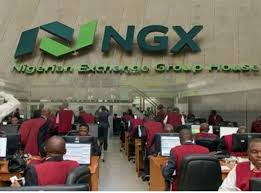It took more than a hundred years after the Industrial Revolution to reach a consensus on the role of human activity as one of the main causes of the increase in gas emissions greenhouse. Today, the challenge is to promote a low-carbon economy that is competitive and accessible enough to achieve this transition while avoiding job losses.
Talking about sustainability today implies thinking about not only environmental factors, but also social and governance factors. Although the concept arose linked to the environment, its subsequent research and dissemination improved the knowledge and depth of the approaches.
The concepts were expanded and the tendency was consolidated that, in an interrelated world, the challenges of global society require the articulation of multiple actors, working collaboratively . Added to that, the disruptions generated by the pandemic, in a context of climate crisis, made a large part of the challenges worldwide more complex. According to World Bank estimates, around 100 million more people today live in extreme poverty as a result of the pandemic. In addition, between 68 and 135 million more people are estimated to be in poverty as a result of climate change. The interrelation of the problems and their magnitude requires joint actions.
Environmental and social issues have permeated the agenda of companies and the public sector. In the Global Risk Perception survey carried out annually by the World Economic Forum (WEF), more than half of the main global risks identified in the long term are related to the environmental crisis and social stability. In this context, ESG performance in companies becomes central to achieving sustainable development and growth with equity.
Although, in our country, the recurring crisis situation leads us to focus on other current issues (economic stagnation, employment crisis, loss of institutions, inflation and inequality in access to technology), the importance of the management of these issues has been incorporated into the agenda for some years now. In 2019, and in accordance with what had been happening globally a few years before, the guidelines on the issuance of sustainable bonds were published in Argentina. This is a big step towards the convergence of finance and sustainability, in which profitability continues to be central, but is accompanied by the management of risks and opportunities linked to the impact on the environment, society and in accordance with good management practices. corporate governance. When in 2019, we began the process of re-labeling a negotiable obligation issued in 2017 as a Green Bond, we were the first private company to integrate the BYMA SVS Panel, today there are more than 20 Bonds listed in the Panel.
Sustainability: a compass in the face of uncertainty
This new paradigm has been gaining in importance, driven by investment funds such as Back Rock and international credit institutions, with a marked growth trend. In 2020, the global issuance of green bonds was a record: 270,000 million dollars, according to Bloomberg. Possibly, the number in 2021 will be higher thanks to the proliferation of new actors, such as the European Union, which raised 12,000 million euros in a bond for ecological and sustainable investments .
More and more companies are incorporating ESG criteria into the core of their business, breaking with traditional schemes and setting new trends in the consumption of products and services.
We are going through a moment in which sustainability went from being an agenda item to being consolidated as a new paradigm. The challenge is to decide if the management is done by conviction, by competition or by coercion, or as Larry Fink, director of Back Rock, mentions, Will you lead or Will you be led?
María Jimena Zibana, responsible for Sustainability at Plaza Logística.
También te puede interesar
Note: This article have been indexed to our site. We do not claim legitimacy, ownership or copyright of any of the content above. To see the article at original source Click Here













